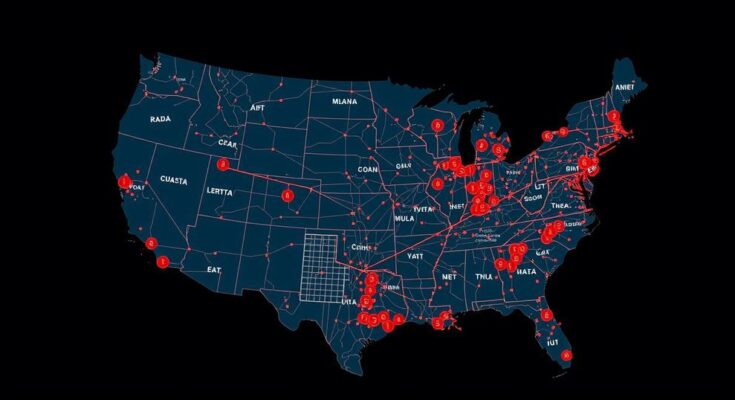Election Day in the United States occurs on the first Tuesday after the first Monday in November, a practice established in the mid-1800s to unify state election dates. This timing coincides with agricultural activities, allowing rural voters adequate travel time to polling places. Prior to this legislation, elections varied widely, leading to potential discrepancies in the electoral process. The choice of November, following careful consideration of farmers’ needs, reflects the socio-economic context of the time and shapes modern voting practices.
In the United States, Election Day is observed on the first Tuesday following the first Monday in November, a practice that has persisted since the mid-1800s. This custom allows millions of Americans to adhere to a specified electoral schedule, which this year falls on November 5, when citizens will cast their votes for either Democratic President Joe Biden or his Republican opponent, Donald Trump. Historically, the rationale behind the timing of U.S. presidential elections traces back to the agrarian society of the 19th century. Prior to the establishment of a uniform election day, states conducted elections on varying dates, creating potential inconsistencies and inefficiencies. In 1844, for instance, presidential voting encompassed a period extending from early November to early December. This method posed challenges, including the possibility of influencing voter behavior based on early reporting from polls that closed earlier. To rectify this situation, the United States Congress enacted legislation in 1845 to synchronize the presidential election date nationwide. The law mandated that elections take place on “the Tuesday next after the first Monday in the month of November.” The selection of the month of November was strategic: it avoided the busy agricultural activities associated with spring planting and the autumn harvest and occurred before the onset of harsh winter weather. The choice of Tuesday also stemmed from practical considerations pertinent to rural voters. Many Americans were farmers residing in remote areas, necessitating travel to polling locations that could take a full day. Thus, election day needed to afford sufficient time for voters to journey to the polls. Additionally, certain days were eliminated from consideration; Sunday was deemed unsuitable due to religious observance, while Wednesday was often reserved for market activities. As a result, Tuesday emerged as the most logical choice for the electoral process. The establishment of this electoral tradition reflects the socio-economic context of 19th century America, emphasizing the need for inclusivity in the voting process, particularly for those engaged in agricultural practices.
The timing of elections in the United States has long been a subject of historical inquiry. Established in the mid-1800s, the tradition of holding elections on the first Tuesday after the first Monday of November arises from a historical need to unify disparate state practices into a singular national standard. Before this mandate, states conducted elections on various dates, which created inconsistencies in the democratic process and could potentially sway the outcomes due to early vote reporting. Understanding the context of the agrarian society prevalent at the time provides insight into why November was selected for elections, as it avoided conflict with the agricultural calendar and maximized accessibility for rural voters who required time to travel to their polling locations. Moreover, legislative actions taken in the 19th century laid the groundwork for modern American electoral practices, highlighting how historical socio-economic conditions shape political frameworks. As the United States evolved, the choice of election day adapted to reflect both the customs of the time and the logistical realities of a largely agrarian population. The implications of this choice continue to resonate today, particularly regarding voter accessibility and turnout, revealing the intertwined nature of history, culture, and democratic practice.
In summary, the scheduling of U.S. presidential elections on the first Tuesday after the first Monday in November can be traced back to a mix of historical necessity and agrarian practicality. This tradition reflects a desire for uniformity in the electoral process while accommodating the lifestyles of 19th century Americans, particularly those engaged in farming. As Election Day approaches, it embodies the lasting legacy of these considerations, ensuring that millions of citizens can participate in the democratic process effectively and inclusively.
Original Source: www.aljazeera.com




